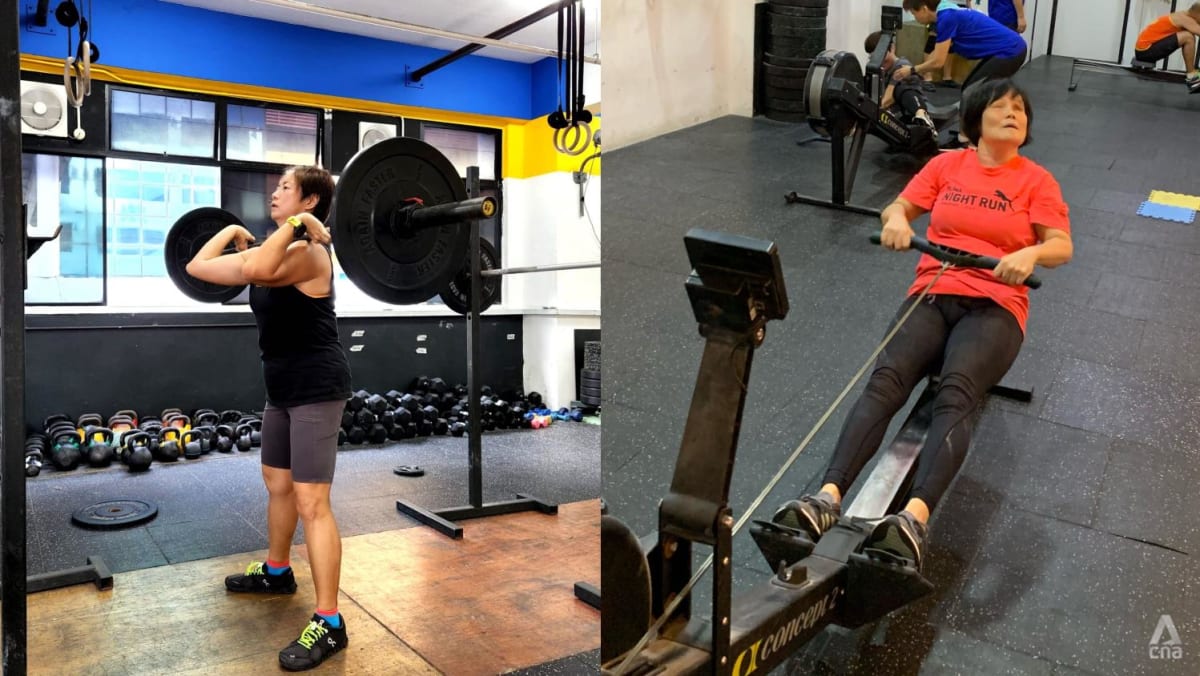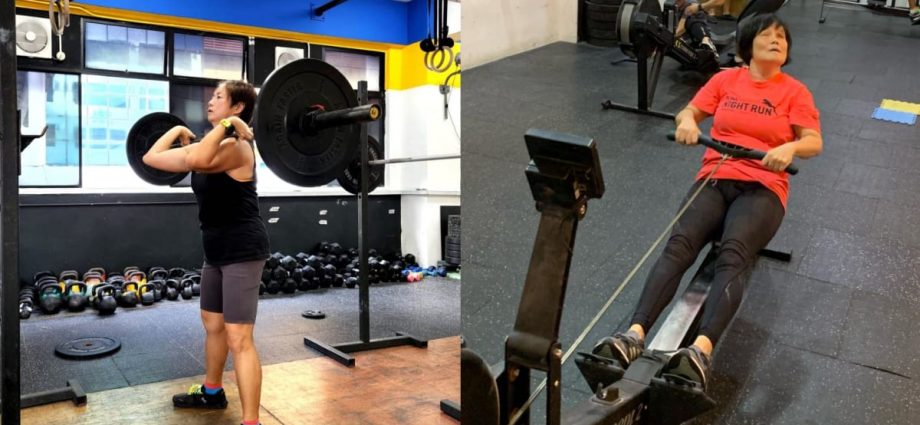
“WORKING TOGETHER TO ADAPT THE MOVEMENT”
For people with disabilities, CrossFit has to be scaled and adapted according to each individual’s unique needs.
Joshua Alan Lee, a full-time coach with Innervate Fitness, said that participants with disabilities follow the same high-intensity workout format as other athletes, completing a range of exercises as part of the workout of the day. However, some modifications are made and the load is decreased to scale the workout to the “needs of the exact person”.
“Once I’m confident that he can move this weight up, I’ll push him to maybe lift a little bit more and get a little bit stronger. And then slowly we progress from there,” said the 31-year-old Lee.
“Of course, safety is a big concern. With our adaptives we’re always watching out for certain movements that may be deemed unsafe.”
Yu finds it difficult to balance when she has to squat while holding a barbell. So she would do front squats while wearing a weighted vest instead. She would also deadlift with a kettlebell using a wall as support.
“Sometimes, the coach and athlete may need to be more creative in working together to adapt the movement,” said Yu, who has been doing CrossFit at Innervate Fitness for more than five years.
“For athletes who use a wheelchair, the coach may disassemble a rowing machine to allow the athlete to simply pull the handle and engage in the movement from the wheelchair without the need for the use of legs,” she said.
Delia Kang, who has been doing CrossFit for about four years, is visually impaired but she said she doesn’t need any adaptations.
The 52-year-old massage therapist said she takes responsibility for making each session safe. For instance, she will ask someone to check her hand positions if she can’t see the knurling on the barbell.

